PHOTO ALBUM
at Work
Portraits

Manga artist, Tezuka Osamu (1940s/Osaka, location unknown)
The birth of the Manga artist, Tezuka Osamu. A portrait.

In actor mode (1960s/Tokyo, location unknown)
A character-esque portrait.

In actor mode 2 (1960s/Tokyo, location unknown)
Impersonating Higeoyaji.

In actor mode 3 (1960s/Fujimidai, Tokyo)
Posing as a detective on the spiral staircase in his work space at home.
The photograph was used in a magazine.

Your necktie's crooked (1960s/location unknown)
A portrait.

In actor mode 4 (1950s/location unknown)
Impersonating a pilot. The photograph was used for a magazine photogravure.
Youth

The aspiring doctor (1945/at the gate of the family home, Takarazuka)
Entering Osaka University, Faculty of Medicine.

Tezuka Osamu, the medical student (1940s/ Osaka University, Faculty of Medicine, Osaka)
Tezuka Osamu wearing the white coat of a doctor in the department of medicine at Osaka University.

Tezuka Osamu was also an actor (November 27, 1947/Asahi Hall, Osaka)
Tezuka Osamu was a member of the student theater group and performed on the stage.
The photograph shows the cast of the Kansai New Theater Company Joint Production of 'Crime and Punishment'.
Tezuka Osamu played the painter, Dmitri (at far left).
In the workshop

Tezuka Osamu loved music (1954/Zoshigaya, Tokyo)
At Namiki House. A high-spirited Tezuka Osamu in his clean new home.
He was a talented accordion and piano player and played both instruments regularly.

With Mii-chan (1954/ Zoshigaya, Tokyo)
Tezuka Osamu's workshop at Namiki House.
With Mii-chan from 'Lost World'.

Studying Manga? (1954/ Zoshigaya, Tokyo)
At Namiki House. Reading the self-authored 'Manga University.'

Tezuka Osamu in his third workshop (around 1957/Hatsudai, Shibuya-ku, Tokyo)
In his workshop in Hatsudai.
Photograph taken by M. T. Hayata.

In his brand new workshop (around 1961/Fujimidai, Nerima-ku, Tokyo)
A portrait.

Looking toward the future (1988/Niiza, Saitama)
Just before the completion of the Tezuka Production Niiza Studio.
The Mushi Production era
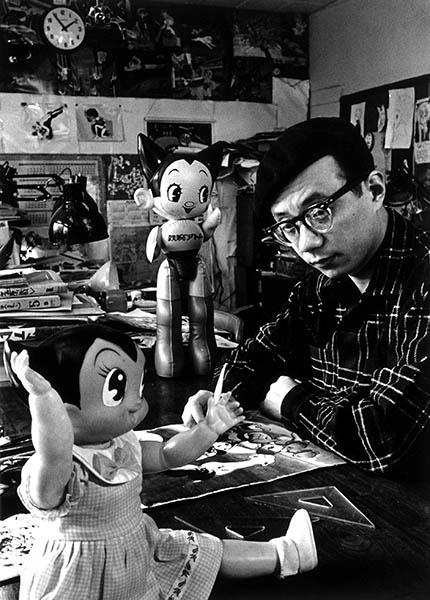
With Uran (1960s/Fujimidai, Tokyo)
In the animation production studio at Mushi Production.
Tezuka Osamu was drawing the manuscript for the Manga Amazing Three.

Drawing Atom (around 1961/Fujimidai, Tokyo)
At Mushi Production.
Creating the first TV animation Astro Boy.

Breathing life into Atom (1960s/Fujimidai, Tokyo)
Drawing his own animations in the work room at Mushi Production.

Making Atom move (1963/Fujimidai, Tokyo)
Watching operations in the production studio at Mushi Production.
The photo is unusual in that Tezuka Osamu is not wearing a beret.

His workshop was next to his house.(1963/Fujimidai, Tokyo)
In front of his studio.
Tezuka Osamu's house and studio were like one continuous garden.
With friends
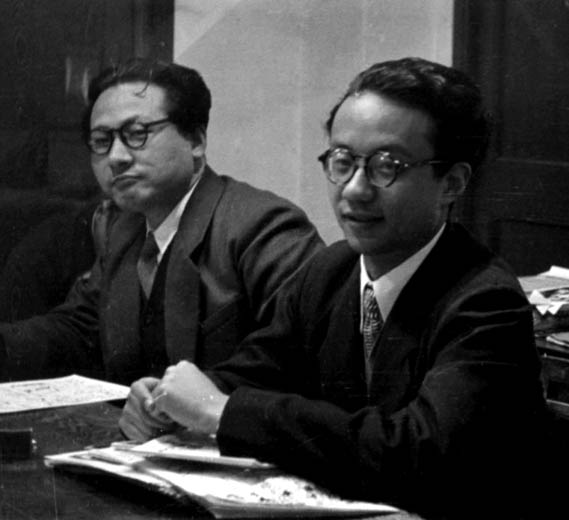
Manga boys (1951/Tokyo)
In the editing room at 'Manga Shonen' with fellow Manga artist, Fukui Eiichi.

Tezuka Osamu with his art teacher (1950s/location unknown)
With his middle school art teacher, Mr. Okajima.

Tezuka Osamu with a popular actress (1950s/location unknown)
With the girl star, Kobato Kurumi.

On the radio (1955/Tokyo, location unknown)
The voice artists for the radio drama production of 'Princess Knight'. Tezuka Osamu is standing at far left.
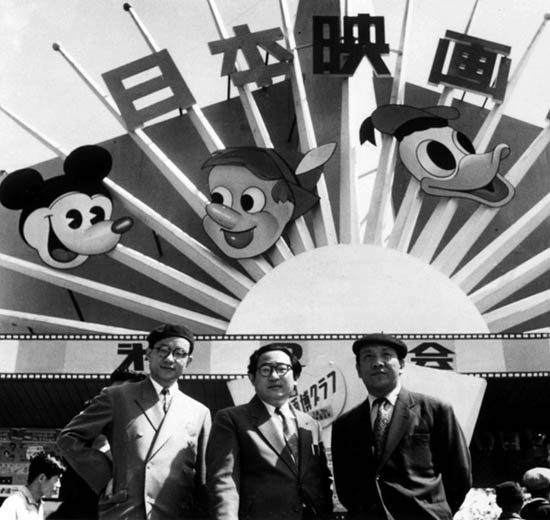
Expanding the anime dream (1950s/Kyoto)
Tezuka Osamu on a visit to the Japan Film Fair in Kyoto with Manga artist friends.

Tezuka Osamu with popular actresses (1950s/Kyoto)
At the Japan Film Fair. The young girls in the center of the photograph were stars in the 1950s.

A friend to justice (1950s/Kyoto)
Posing as a Manga character on a sightseeing visit to the Film Village.

Two geniuses (July 2, 1958/Tokyo)
Visiting the artist, Yamashita Kiyoshi.

The young men of the Tokiwaso (1982/Tokyo)
A reunion of the friends from the heydays of the Tokiwaso before it was torn down.
From left: Ishinomori Shotaro, Tezuka Osamu, Yokota Tokuo, Abiko Moto-o, Suzuki Shinichi, and Fujimoto Hiroshi.

Friendship with Moebius (1982/Kyoto)
Tezuka Osamu entertained the French cartoonist, Moebius (second from right) in Kyoto and Nara during Moebius' visit to Japan.

Growing a little taller (1982/Kyoto)
Tezuka Osamu with a French author during his visit to Japan
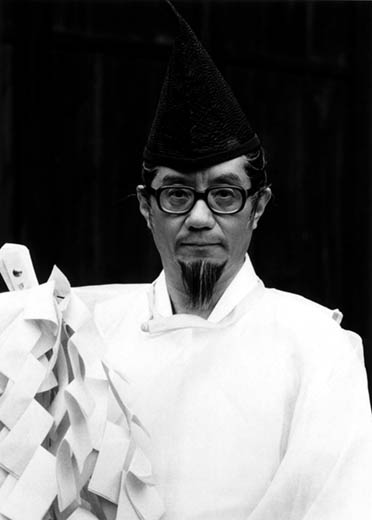
Not an apparition (June 3, 1986/Tokyo)
Tezuka Osamu played the role of a Shinto priest
in the video 'Yokai Tengoku' (aka Apparition Heaven),
produced by his eldest son, Tezuka Makoto.
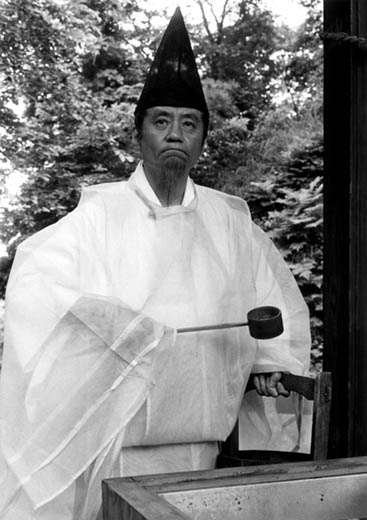
Oden Shrine (June 3, 1986/Tokyo)
Tezuka Osamu played the role of a Shinto priest
in the video 'Yokai Tengoku' (aka Apparition Heaven),
produced by his eldest son, Tezuka Makoto.
Various lifestyles

With Atom (September 24, 1963/Nara)
Surrounded by characters at an 'Astro Boy' event held at Dreamland.

Surrounded by top stars (February 14, 1978/Ginza, Tokyo)
At the production release of the movie 'The Phoenix', which was held at the Imperial Hotel.
From left: Tanaka Ken, Emori Toru, Ishizaka Koji, Wakayama Tomisaburo, Director Ichikawa Kon,
Tezuka Osamu, Tanikawa Shuntaro, Takamine Mieko, and Koshino Junko.

Welcoming one of Disney's leading animators (June 1978/Tokyo)
Entertaining Ward Kimball, one of Disney's animators who was on a visit to Japan.
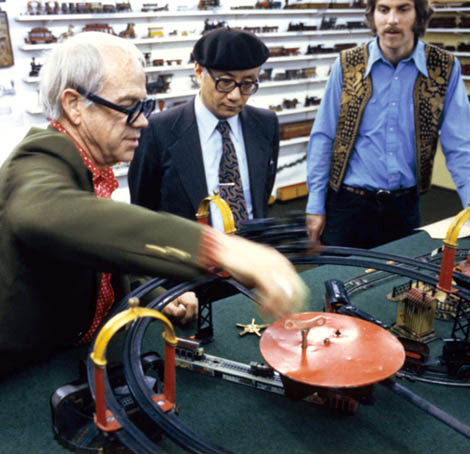
Boys for eternity (1979/America)
On a visit to the home of Ward Kimball.
On the right is Frederick Schodt, a student of Manga.

A special class given by the Manga professor (July 1982/Ueno, Tokyo)
At the Manga Exhibition 1982 held at Ueno Royal Museum.

The Manga Kingdom (August 16, 1982/Tokyo)
The opening of Manga Kingdom, held in Hakubamura, Nagano Prefecture to celebrate the 50th anniversary of the Manga group.
Tezuka Osamu made a speech at the departure ceremony of the train, the Manga Kingdom, at an event staged by the National Railway.

Teaching the art of Manga drawing (July 31, 1982/Ueno, Tokyo)
Holding a Manga class at the Manga Exhibition 1982.
Tezuka Osamu's stage manner is also famous.

Receiving the Asahi Prize (January 29, 1988/Tokyo)
Tezuka Osamu received the 1987 Asahi Prize for his creative achievements
in the world of Manga and animation since the second World War.

Holding the Asahi Prize (January 29, 1988/Tokyo)
Holding the bronze Asahi Prize.

Making smiling faces (August 27, 1988/Tokyo)
Producing the model for the sculpture 'Laughter',
which is on display at the Kawasaki City Museum.


